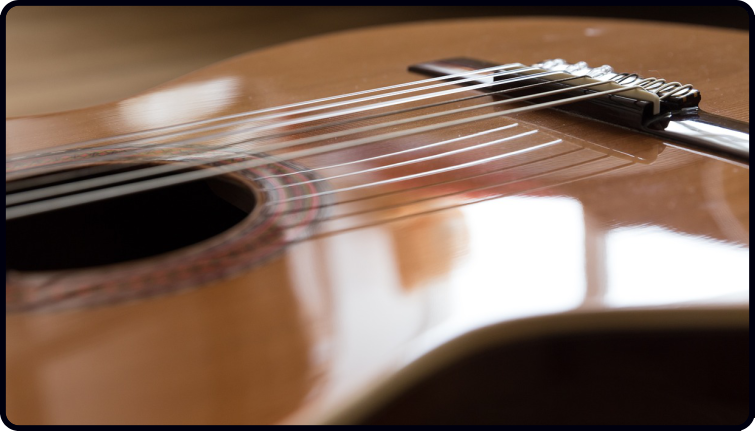I was having a little discussion with a student the other day.
We talked about one of the big problems with the way chords are often taught.
One issue is that people are taught to only play chords in one way.
But the truth is, to be the best guitarist you can be…
Ideally, you’ll be able to play the most common chords in a few different ways.
I don’t mean playing barre chord versions or triads (although I do recommend them too, but that’s a different topic for another day).
I mean being able to play little partial versions of the chords you know
…Especially the ever-popular G and C chords.
Those two chords can cause problems for beginners.
For beginners, there may be buzzing notes and awkward changes (which can be made worse if your fingers feel stiff).
If you’re a strummer, yes, you need to master the “normal” versions of these chords.
There’s no real way around that.
…But as you know, fingerpicking is my bread and butter and what I focus more on these days (although I do still love strumming and it’s still a big part of my playing).
The great thing about fingerpicking though, is that you have…
Much more flexibility in how you play your chords
For instance, the G Major…
If you’re fingerpicking this chord, you sometimes only need to play one or two fretted notes from the chord (usually when there are open strings being played).
This means you can fret a two-finger version or even a one-finger version of the chord.
…And I often do.
This makes it easier on the fretting hand and allows me to…
Focus on making the music flow better
The problem with learning music purely from TAB or notation is that you don’t get shown these things.
Playing a full chord when you don’t always need to can be like trying to smash through a brick wall.
Instead, it’s often easier to take a moment to plan your route and find a quicker way around the brick wall.
Partial chords allow for that.
Really, it’s all about having options – and these options work for different situations.
So I urge you when fingerpicking to think about ways to strip back the chord so you can make the music flow.
Can you use one or two fingers for the chord instead of three or four? Will doing this allow your chord changes to be faster? It often likely will.
Anyway, this subject is something I’m teaching in one of the new Dan Thorpe Acoustic Academy lessons for the month of February.
In the lesson, I’m teaching a super famous song using my “No Chord Fingerstyle” method but also breaking down the exact finger movements I like to use.
It’s not a “hack” or anything like that.
…And it requires you to be patient, but I believe this lesson will open your eyes to how fingerstyle can be played.
This means that whenever you see a song that requires picking…
You’ll be able to see a smoother way to play it than the TAB will show you.
I think of it as a cheat code on a computer game – even when you have a cheat code, you’ve still got to play the game (no one can play it for you), but the cheat code makes it a whole lot easier.
Anyway, to get this lesson, you’ll need to join the Dan Thorpe Acoustic Academy before the deadline for the February lessons.
You can find out more about it below…
The Dan Thorpe Acoustic Academy
Have a great weekend
Dan Thorpe
Guitar Domination
P.S. This post was originally taken from Dan Thorpe’s private email list. To get blog posts like this sent to you which are full of great tips to make fingerpicking, strumming, and learning guitar more enjoyable (especially if you are over 40) join Dan’s list. It’s 100% free, HERE.


Add Comment